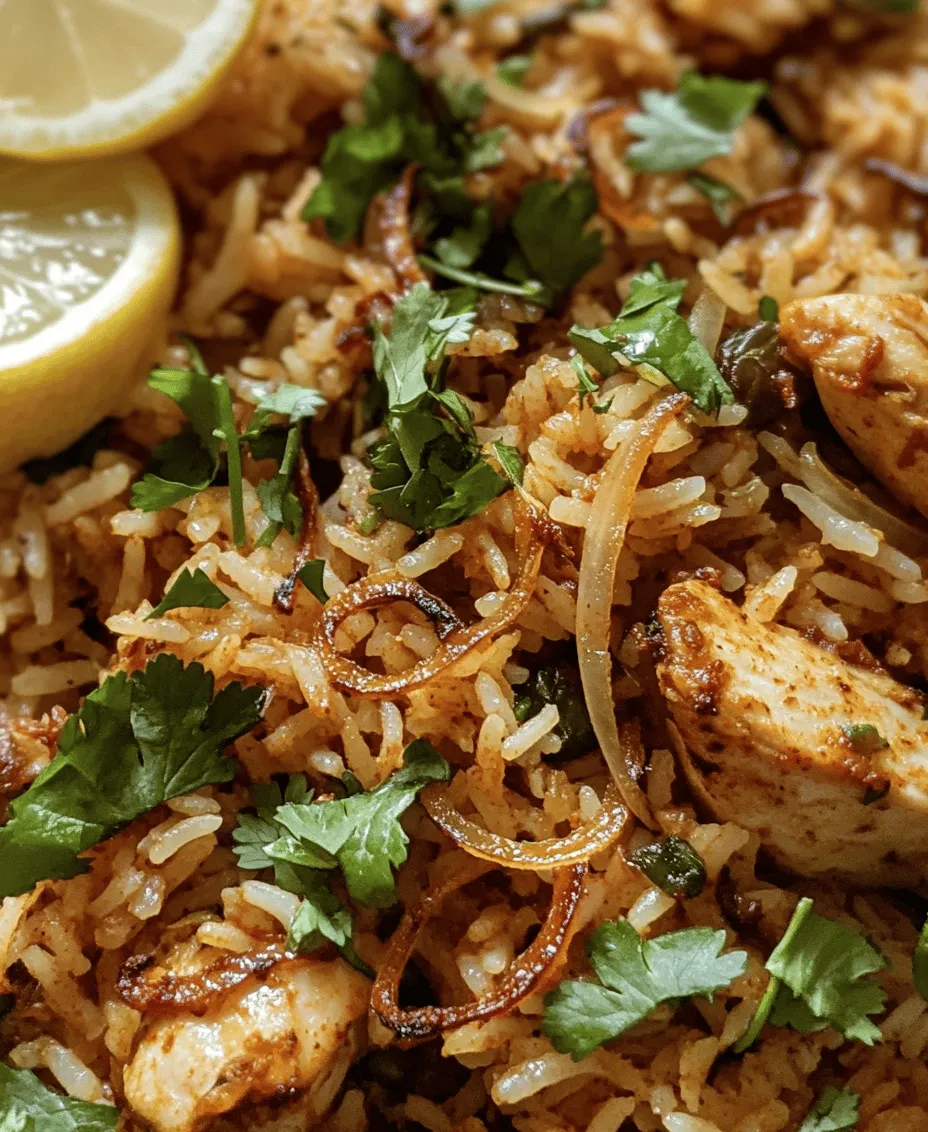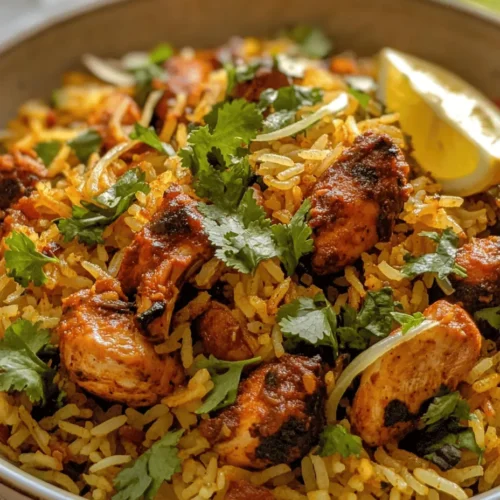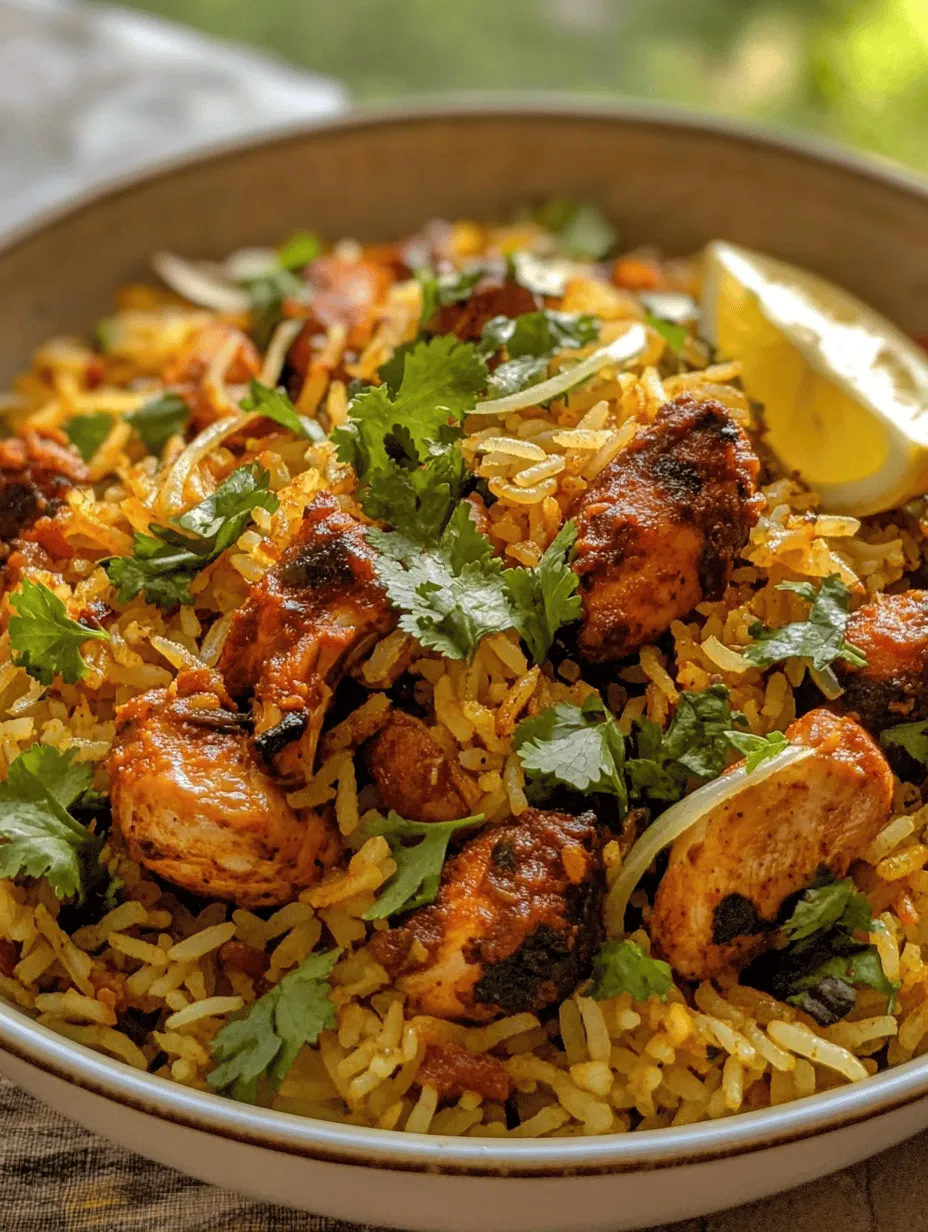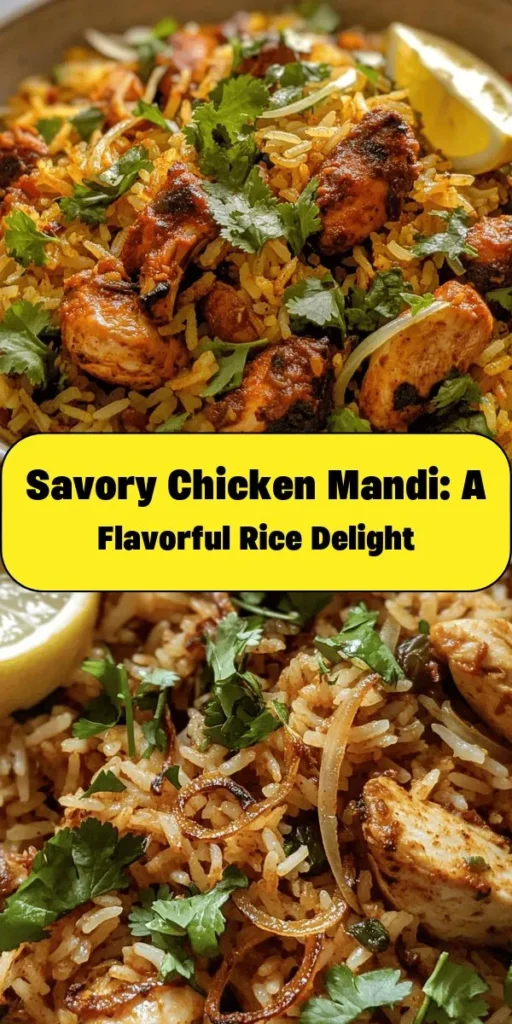Mandi Delight is a traditional Middle Eastern dish that has captured the hearts and palates of food lovers around the world. Originating from the Arabian Peninsula, this aromatic rice dish is a celebration of flavors, textures, and culinary heritage. Characterized by its fragrant basmati rice, tender chicken, and a harmonious blend of spices, Mandi is more than just a meal; it is a cultural experience that brings people together.
The essence of Mandi lies in its cooking method, which involves slow-cooking marinated chicken with rice, allowing the flavors to meld beautifully. The result is a dish that is not only visually stunning but also rich in taste. Served on special occasions and during communal gatherings, Mandi is a dish that symbolizes hospitality and generosity in Middle Eastern culture.
Understanding Mandi
The Origin of Mandi Cuisine
Mandi is believed to have originated in Yemen, where it was traditionally prepared by Bedouins as a hearty meal. The word “Mandi” is derived from the Arabic term “nada,” which means “dew,” symbolizing the tender and succulent nature of the dish. Over the years, Mandi has spread across the Arabian Peninsula and beyond, with each region adding its unique twist to the recipe. It has become a staple in many Middle Eastern countries, including Saudi Arabia, the UAE, and Oman.
Traditional Cooking Methods
The traditional method of preparing Mandi involves cooking the chicken and rice in a unique way that enhances their flavors. The chicken is typically marinated with a blend of spices and then cooked in a pot, often over an open flame or in a traditional tandoor. Once the chicken is nearly cooked, the aromatic basmati rice is added to the pot, along with a rich broth made from the chicken drippings and spices. This method ensures that the rice absorbs all the delicious flavors from the chicken, resulting in a dish that is both fragrant and satisfying.
The Role of Spices
Spices are the heart of Mandi, contributing to its distinctive flavor profile. A typical Mandi spice mix includes cumin, coriander, cardamom, cinnamon, and saffron, among others. These spices not only add depth to the dish but also impart a warm, inviting aroma that fills the kitchen. The balance of spices varies from one region to another, allowing cooks to personalize their Mandi while still maintaining its traditional essence.
Ingredient Breakdown
Key Ingredients in Mandi Delight
To create the perfect Mandi Delight, it is essential to use high-quality ingredients. The main components of this dish include:
1. Basmati Rice: Known for its long grains and fragrant aroma, basmati rice is the foundation of Mandi. It is crucial to choose aged basmati rice for the best texture and flavor. This type of rice has a lower moisture content, which helps it remain fluffy and separate when cooked.
2. Chicken: The choice of chicken can significantly impact the final dish. Traditionally, whole chickens are used, but you can also opt for chicken pieces such as thighs or drumsticks. The key is to ensure that the chicken is fresh and of good quality, as it will be marinated and cooked to perfection.
3. Mandi Spice Mix: This spice blend is what sets Mandi apart from other rice dishes. Common ingredients include ground cumin, coriander, black pepper, cinnamon, and a hint of saffron for color and flavor. A homemade spice mix can elevate the dish, allowing you to adjust the seasoning to your taste.
4. Fresh Herbs and Garnishes: Fresh herbs like cilantro or parsley, along with fried onions and raisins, are often used as garnishes. These ingredients not only add visual appeal but also enhance the dish’s flavor profile, creating a symphony of tastes and textures.
The Importance of Basmati Rice
Basmati rice is integral to Mandi Delight. Its long, slender grains are known for their nutty flavor and fluffy texture. When properly cooked, basmati rice holds its shape and does not become sticky, making it the ideal choice for this dish. Additionally, the grains of basmati rice are excellent at absorbing flavors, allowing them to soak up the rich spices and chicken juices during the cooking process. To achieve the best results, it is recommended to rinse the rice thoroughly before cooking to remove excess starch, which can lead to clumping.
Choosing and Preparing the Chicken
When selecting chicken for Mandi Delight, consider the following tips:
– Freshness: Always choose fresh chicken, as it will yield the best flavor and texture. If using frozen chicken, ensure it is fully thawed before marinating.
– Cut Options: Whole chickens can be used for an authentic presentation, but chicken pieces such as thighs and drumsticks work well for ease of serving and faster cooking.
– Marination: Marinating the chicken is crucial for infusing it with flavor. A typical marinade includes yogurt, garlic, ginger, and the Mandi spice mix. This not only tenderizes the meat but also allows the spices to penetrate deeply, resulting in a flavorful dish.
The Mandi Spice Mix
The Mandi spice mix is a vital component that defines the dish’s character. While you can purchase pre-made blends, creating your own allows for customization. A basic Mandi spice mix includes:
– 2 teaspoons ground cumin
– 2 teaspoons ground coriander
– 1 teaspoon ground cardamom
– 1 teaspoon ground cinnamon
– 1 teaspoon ground black pepper
– A pinch of saffron (optional)
Mix these spices in a bowl and store them in an airtight container until ready to use. Adjust the quantities according to your taste preferences, or add other spices like turmeric or allspice for a unique twist.
Fresh Herbs and Garnishes
To elevate the presentation and flavor of Mandi Delight, fresh herbs and garnishes play a crucial role. Common choices include:
– Cilantro or Parsley: Chopped fresh herbs add a burst of color and freshness to the dish. They can be sprinkled on top just before serving to brighten the flavors.
– Fried Onions: Crispy fried onions provide a delightful crunch and savory flavor, complementing the softness of the rice and chicken.
– Raisins or Nuts: Adding raisins or toasted nuts like almonds or pine nuts can introduce a sweet and nutty contrast to the savory elements of the dish.
Preparing Mandi Delight
Step-by-Step Guide to Marinating the Chicken
1. Prepare the Marinade: In a large bowl, combine yogurt, minced garlic, grated ginger, and the Mandi spice mix. Mix well to form a smooth paste.
2. Marinate the Chicken: Add the chicken pieces to the marinade, ensuring they are coated evenly. Cover the bowl with plastic wrap and let it marinate in the refrigerator for at least 2 hours or preferably overnight. This allows the flavors to penetrate deeply into the meat.
3. Bring to Room Temperature: Before cooking, remove the marinated chicken from the refrigerator and let it sit at room temperature for about 30 minutes. This helps in even cooking.
Techniques for Preparing Aromatics and Building Flavor
1. Sauté Aromatics: In a large, heavy-bottomed pot, heat a few tablespoons of ghee or oil over medium heat. Add sliced onions and sauté until golden brown. This process caramelizes the onions, enriching their flavor.
2. Add Garlic and Ginger: Once the onions are browned, add minced garlic and grated ginger. Sauté for an additional minute until fragrant.
3. Incorporate Spices: Stir in a teaspoon of the Mandi spice mix to the aromatics, allowing the spices to bloom and release their essential oils. This step is crucial for building a robust flavor base for the dish.
Instructions for Cooking the Chicken Properly
1. Add the Chicken: Carefully place the marinated chicken into the pot with the sautéed aromatics. Sear the chicken on all sides until it develops a nice golden color, sealing in the juices.
2. Cook with Liquid: Once the chicken is browned, add water or chicken broth to the pot. Ensure the liquid covers the chicken. Bring to a gentle simmer, cover the pot, and cook for about 30-40 minutes, or until the chicken is fully cooked and tender.
3. Remove the Chicken: Once cooked, transfer the chicken to a plate and set it aside. The remaining liquid in the pot will be used for cooking the rice.
Preparing the Rice
1. Rinse and Soak: In a separate bowl, rinse the basmati rice under cold water until the water runs clear. This step removes excess starch, preventing the rice from becoming sticky. After rinsing, soak the rice in water for about 30 minutes to allow it to absorb moisture.
2. Strain the Rice: After soaking, drain the rice and set it aside.
3. Cooking the Rice: In the same pot with the chicken broth, bring the liquid to a boil. Add the soaked rice, ensuring it is evenly distributed. Stir gently to combine, then add the cooked chicken back on top of the rice. Cover the pot tightly with a lid.
Combining Chicken and Rice for the Final Cooking Stage
1. Simmer: Reduce the heat to low and let the Mandi cook for approximately 20-25 minutes. Avoid lifting the lid during this time to ensure even cooking and steam retention.
2. Fluff the Rice: After the cooking time, turn off the heat and let the pot sit, covered, for an additional 10 minutes. This resting period allows the rice to further absorb any remaining moisture. Once ready, carefully fluff the rice with a fork, mixing it with the chicken.
As you prepare to serve Mandi Delight, the aroma wafting through your kitchen will surely entice everyone around. Stay tuned for the final touches and presentation tips that will elevate your Mandi to new heights of culinary delight.

Cooking Techniques and Tips
Cooking Mandi Delight perfectly requires a blend of technique and understanding of flavors. Here are some essential tips to ensure that your Mandi turns out delicious every time.
Importance of Temperature Control During Cooking
Temperature control is crucial when preparing Mandi to achieve the right texture and flavor. Begin by browning your chicken or meat over medium-high heat to develop a rich, golden crust. This initial searing locks in juices and creates a deep flavor base. Once you’ve added your spices and aromatics, reduce the heat to simmering. Maintaining a steady simmer rather than a vigorous boil allows the flavors to meld beautifully without overcooking the meat.
Insights on Simmering vs Boiling for Optimal Flavor Extraction
Simmering is the technique you want to leverage when making Mandi. While boiling rapidly cooks the ingredients, it can also lead to a loss of flavor and nutrients. Simmering, on the other hand, allows for gentle cooking, which helps in the gradual extraction of flavors from the spices and the meat. Keep your pot covered during this process to trap steam, which helps in cooking the rice evenly and infusing it with the dish’s aromatic spices.
Suggestions for Infusing Saffron and Its Impact on Flavor and Presentation
Saffron is a key ingredient that elevates Mandi Delight from a simple dish to a culinary masterpiece. To infuse saffron effectively, gently heat a small amount of water or broth (about 2 tablespoons) and add a pinch of saffron threads to it. Allow it to steep for 10 to 15 minutes, then stir this saffron infusion into your rice towards the end of cooking. The result is not only a beautiful golden hue but also a luxurious aroma that enhances the overall flavor profile of the dish.
How to Fluff and Serve the Rice for a Perfect Texture
After your rice has absorbed all the liquid and cooked through, let it rest for about 10 minutes before fluffing. Use a fork to gently separate the grains, ensuring you don’t mash the rice. This step is essential for achieving that light, fluffy texture characteristic of a perfect Mandi. For serving, you may want to mold the rice in a large serving bowl or platter, creating a well in the center to nestle the chicken or meat. This not only makes for an appealing presentation but also allows the flavors to mingle beautifully.
Serving Suggestions
Mandi Delight is not just a meal; it’s an experience. Here are some creative ways to present it and enhance your dining experience.
Creative Ways to Present Mandi Delight at the Table
Presentation plays a significant role in the enjoyment of Mandi. To create a stunning centerpiece, consider using a large, decorative platter. Layer the fluffy rice and arrange the chicken or meat on top. You can garnish with fried onions, toasted almonds, and fresh herbs like cilantro or parsley for an added burst of color and flavor. For an authentic touch, serve it with an array of small bowls filled with condiments such as spicy sauces, yogurt, or a tangy tomato salad.
Pairing Suggestions for Sides and Accompaniments
Mandi pairs beautifully with various sides that complement its rich flavors. A fresh salad made with cucumbers, tomatoes, and lemon juice provides a refreshing contrast. You might also consider serving a tangy yogurt sauce or a spicy harissa on the side to elevate the dish further. Traditional Middle Eastern flatbreads, like khubz or pita, are excellent for scooping up the rice and meat, making the meal interactive and enjoyable.
Cultural Practices Around Serving Mandi in Different Regions
The serving of Mandi varies across cultures. In many Middle Eastern countries, Mandi is often served on large platters during communal meals, where family and friends gather around to share the dish. It’s common practice to eat with the hands, further enhancing the communal experience. In some regions, it is customary to serve Mandi with a side of pickles or spicy sauces, which adds an exciting flavor contrast to the dish.
Nutritional Information
Understanding the nutritional aspects of your Mandi Delight can help you appreciate the dish even more.
Overview of Nutritional Benefits of the Ingredients Used in Mandi Delight
Mandi Delight is a nutritious meal that combines the goodness of various ingredients. The primary ingredients—chicken or lamb, basmati rice, and a variety of spices—offer a wealth of nutrients. Chicken is an excellent source of lean protein, essential for muscle building and repair. Basmati rice is a great source of carbohydrates, providing energy, while the spices used in Mandi, such as turmeric, cumin, and coriander, possess antioxidant properties that can boost overall health.
Discussion on the Balance of Protein, Carbohydrates, and Fats in the Dish
In Mandi, there is a balanced distribution of macronutrients. The protein from the meat, carbohydrates from the rice, and healthy fats (especially if you use ghee or olive oil) come together to create a well-rounded meal. This balance makes Mandi a satisfying dish that can keep you full for longer, making it a great option for lunch or dinner.
Tips for Making the Dish More Nutritious Without Losing Authenticity
If you’re looking to make Mandi even more nutritious, consider incorporating more vegetables into the dish. Adding carrots, peas, or bell peppers can increase fiber and vitamin content. You can also opt for brown basmati rice instead of white for a higher fiber content. Another tip is to reduce the amount of oil used in cooking while still allowing the spices to shine.
Cultural Significance of Mandi
Mandi is not just a dish; it’s a symbol of celebration and togetherness, particularly in Middle Eastern culture.
Exploration of Mandi as a Dish for Celebrations and Gatherings
Traditionally, Mandi is served during special occasions such as weddings, family gatherings, and religious festivals. Its preparation often becomes a communal activity, where family members come together to cook and celebrate. The large portions and the communal nature of serving Mandi make it ideal for sharing, reinforcing bonds among family and friends.
Stories or Anecdotes Related to Mandi in Middle Eastern Culture
Many families have unique stories tied to their Mandi recipes, often passed down through generations. In some cultures, the preparation of Mandi is seen as an art form, with each family adding their personal touch to the dish. This creates a sense of identity and pride in family traditions, showcasing the dish’s deep-rooted significance in everyday life and special occasions alike.
The Evolution of Mandi Over Time and Its Popularity in Modern Cuisine
Mandi has evolved over time, gaining popularity beyond its cultural roots. Today, you can find various adaptations of Mandi in restaurants worldwide, reflecting local ingredients and tastes. This evolution highlights Mandi’s versatility and its ability to adapt to modern culinary trends while still retaining its traditional essence.
Conclusion
Mandi Delight is more than just a meal; it is a rich tapestry of flavors, culture, and community. With its unique blend of spices, tender meat, and fluffy rice, this dish embodies the warmth of Middle Eastern hospitality. Making Mandi at home is an experience that allows you to connect with family, friends, and the rich culinary traditions of the region.
As you embark on your Mandi-making journey, remember the techniques and tips shared here to enhance your cooking. Enjoy the process of creating this beloved dish and the joy it brings to the table. Explore more traditional recipes to further appreciate the diverse flavors and cultures around the world. Each dish tells a story, and through cooking, you become a part of that narrative.



